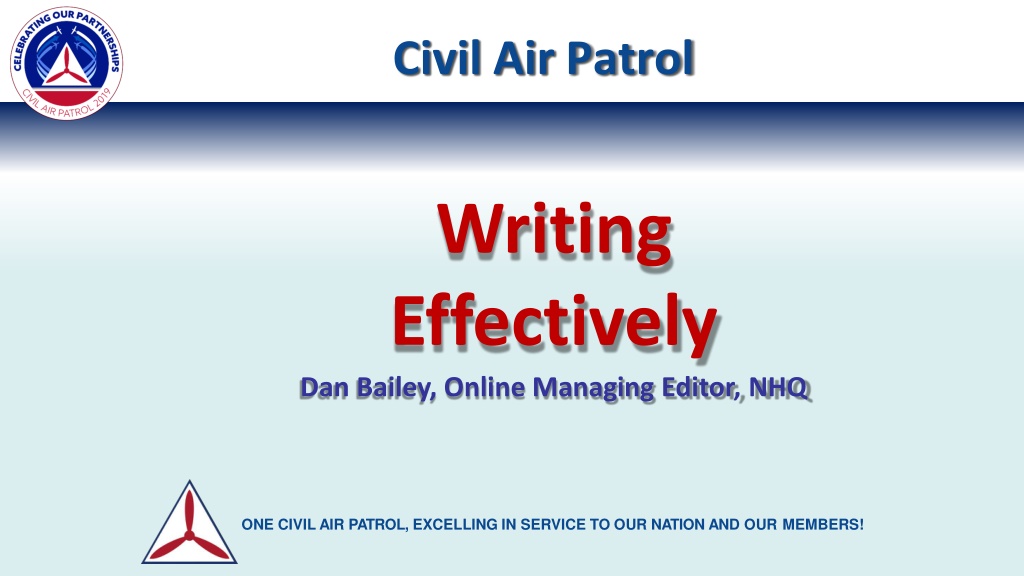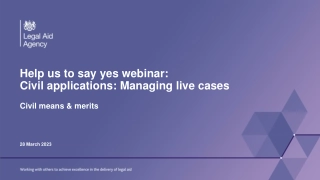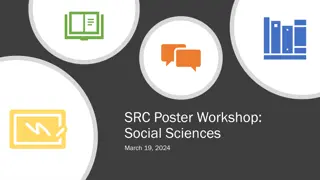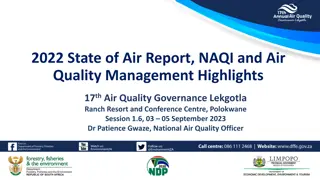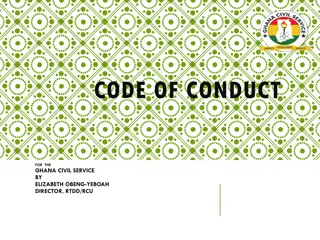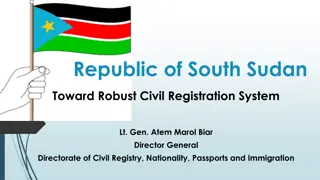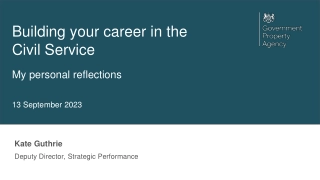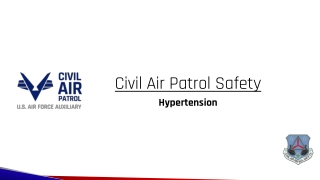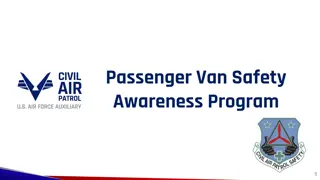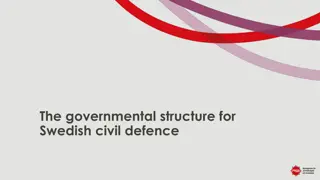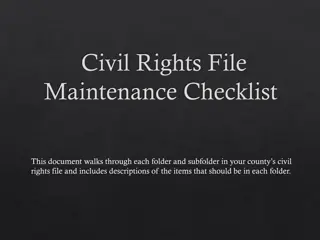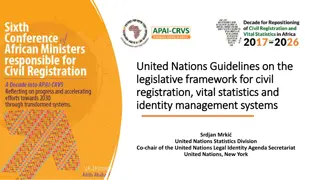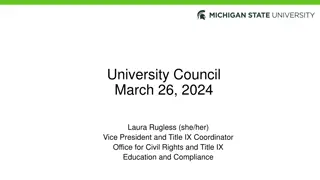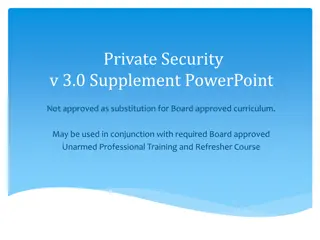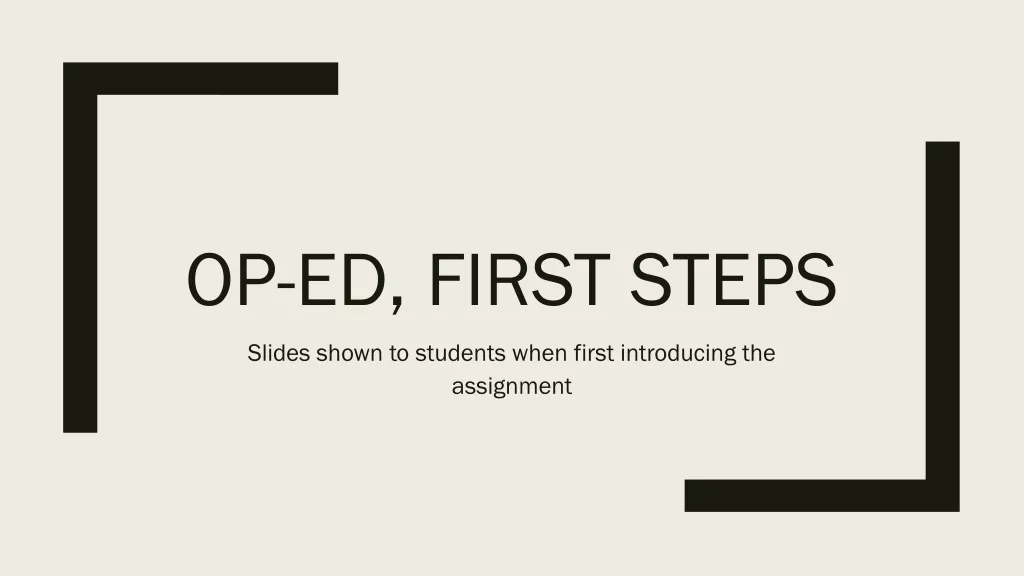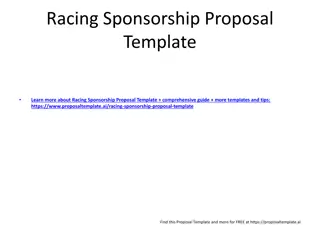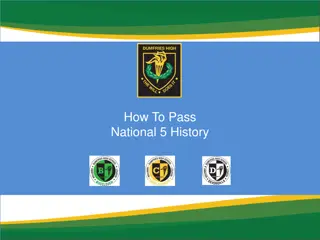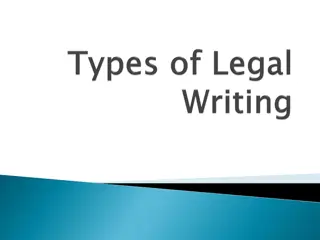Writing Effectively for Civil Air Patrol: Tips from Dan Bailey
Learn how to write effectively to create publishable pieces and convey impactful stories for Civil Air Patrol. Understand the importance of storytelling and how to structure your narrative to engage readers effectively.
Download Presentation
Please find below an Image/Link to download the presentation.
The content on the website is provided AS IS for your information and personal use only. It may not be sold, licensed, or shared on other websites without obtaining consent from the author. Download presentation by click this link. If you encounter any issues during the download, it is possible that the publisher has removed the file from their server.
Presentation Transcript
Civil Air Patrol Writing Effectively Dan Bailey, Online Managing Editor, NHQ ONE CIVIL AIR PATROL, EXCELLING IN SERVICE TO OUR NATION AND OUR MEMBERS!
Overview We all know how to write ... pretty much. And we all know what to write ... more or less. ONE CIVIL AIR PATROL, EXCELLING IN SERVICE TO OUR NATION AND OUR MEMBERS!
Overview Writing effectively, however, is what separates a fine and even more importantly, perhaps, a publishable piece of writing from an adequate one. Effective storytelling is what we should strive for. ONE CIVIL AIR PATROL, EXCELLING IN SERVICE TO OUR NATION AND OUR MEMBERS!
Overview And why is that important? First, of course, everyone wants to do the best job he or she can do. Second, an effectively communicated story is far more likely to convey your message namely, that members of your squadron or wing are doing great things for their community as volunteers. ONE CIVIL AIR PATROL, EXCELLING IN SERVICE TO OUR NATION AND OUR MEMBERS!
First things first So where do we start? We start at the beginning, common sense says. Actually, though, that s not always the case, depending on how we define the beginning. ONE CIVIL AIR PATROL, EXCELLING IN SERVICE TO OUR NATION AND OUR MEMBERS!
First things first Too often, submissions we receive for CAP.news are told strictly chronologically. Sometimes that works, but just as often it doesn t. I try to follow a simple rule of thumb: If you were telling the story to a friend, how would you start? ONE CIVIL AIR PATROL, EXCELLING IN SERVICE TO OUR NATION AND OUR MEMBERS!
First things first You d probably start by saying something along the lines of, Today we found a plane that went missing two days ago! The pilot was banged up, but he s in the hospital and he should beOK. It s highly unlikely you d start by telling your friend, This morning at 0800 we received a tasking from the Air Force Rescue Coordination Center to help search for an aircraft reported missing on Thursday, March 21. ONE CIVIL AIR PATROL, EXCELLING IN SERVICE TO OUR NATION AND OUR MEMBERS!
First things first And yet there s probably a 50-50 chance that a search and rescue story submitted for publication on CAP.news started just that way. Instead, begin with the most importantand interesting part of the story. And while you re at it ... ONE CIVIL AIR PATROL, EXCELLING IN SERVICE TO OUR NATION AND OUR MEMBERS!
General guidelines Avoid abbreviations whenever possible. Second and subsequent references to CAP are fine, assuming you ve already written out our full name. The same goes for the familiar likes of FEMA or the FAA. Otherwise, though, spell it out. ALWG means nothing to the public. Neither does SAR or SAREX or other forms of shorthand thatwe re likely to use among ourselves, like O-rides. ONE CIVIL AIR PATROL, EXCELLING IN SERVICE TO OUR NATION AND OUR MEMBERS!
General guidelines You re most likely writing for a non-CAP audience. The people you re trying to communicate with don t have a clue what AL-032 is. Write the Alabama Wing s Maxwell Composite Squadron instead. And be careful to use exact names. A significant portion of the submissions I see misstate the exact names of airports, for instance, or they omit members first names particularly those of cadets. ONE CIVIL AIR PATROL, EXCELLING IN SERVICE TO OUR NATION AND OUR MEMBERS!
General guidelines Use Associated Press style. It differs from military style, and it s preferred by any news outlet worthy of the name. The main reason you should use it is to require as little work as possible for the newspaper editor who might be considering your submission for publication. In other words, the less the editor has to do, the more likely you are to get published ... especially as newspaper staffing continues to dwindle. ONE CIVIL AIR PATROL, EXCELLING IN SERVICE TO OUR NATION AND OUR MEMBERS!
General guidelines The most common violations of AP style we see are ranks. If Joe Jones is a CAP first lieutenant, AP dictates that he s 1st Lt. Joe Jones, not 1Lt Joe Jones or some other version of the rank. His daughter is Cadet Airman 1st Class Jane Jones, not C/A1C Jones or whatever other version someone came up with. (AP rank abbreviations are included at the end of this presentation.) ONE CIVIL AIR PATROL, EXCELLING IN SERVICE TO OUR NATION AND OUR MEMBERS!
General guidelines The next most common AP style violation is probably capitalization of titles. If a title occurs in front of a name, it s capitalized Gov. Kay Ivey, for instance. If it s found elsewhere in a sentence, it s lower-case Kay Ivey, governor. The governor announced a program Friday. Heather Wilson is secretary of the Air Force. In addition, use standard style for time of day, rather than military style 8 a.m., not 0800. The same goes for dates March 23, not 23 March. ONE CIVIL AIR PATROL, EXCELLING IN SERVICE TO OUR NATION AND OUR MEMBERS!
Organization Probably most, if not all, of you have encountered the term inverted pyramid as an approach to writing an article. It s by no means an ironclad rule for organizing a story, and that s particularly true when you re writing a feature story as opposed to a pure news story. But it has its uses, and following it makes sure you ve covered the essentials. ONE CIVIL AIR PATROL, EXCELLING IN SERVICE TO OUR NATION AND OUR MEMBERS!
Organization Organization ONE CIVIL AIR PATROL, EXCELLING IN SERVICE TO OUR NATION AND OUR MEMBERS!
When youre writing ... The elements in the top level of the inverted pyramid should be familiar to most of us the five W s (Who, What, Where, When, Why) and H (How). Crowding all of those into an opening sentence would probably be quite cumbersome, but they do need to be addressed early in your article. ONE CIVIL AIR PATROL, EXCELLING IN SERVICE TO OUR NATION AND OUR MEMBERS!
When youre writing ... In addition: Keep your prose simple. When you do have to use complex sentences, however, as will sometimes prove to be the case, do your best to offset them with simple, straightforward statements. I did that just now. Avoid using big words. Keep paragraphs short one or two sentences should suffice. ONE CIVIL AIR PATROL, EXCELLING IN SERVICE TO OUR NATION AND OUR MEMBERS!
When youre writing... Write in active voice. For instance, A ground crew from the XYZ Composite Squadron found the plane, rather than The plane was found by a ground crew from the XYZ Composite Squadron. Use quotes from more than one source; keep them short and to the point. Limit your release to one or 1 pages if at all possible. ONE CIVIL AIR PATROL, EXCELLING IN SERVICE TO OUR NATION AND OUR MEMBERS!
After youve written ... Be sure to include a headline and, if needed, a subhead. Proofread your release at least twice. If at all possible, have someone else read it as well. Avoid common mistakes. Remember: hangars for planes, hangers for clothes. ONE CIVIL AIR PATROL, EXCELLING IN SERVICE TO OUR NATION AND OUR MEMBERS!
After youve written ... Always include a graphic element with your submission, even if it s as simple as a wing or squadron patch or a head-and-shoulders photo of someone quoted in or otherwise important to the article. ONE CIVIL AIR PATROL, EXCELLING IN SERVICE TO OUR NATION AND OUR MEMBERS!
Rank abbreviations per AP Use these abbreviations (or, in some cases, the lack thereof) for rank when written in front of a senior member or cadet s name: Major General Maj. Gen. Lieutenant General Lt. Gen. Colonel Col. Lieutenant Colonel Lt. Col. Major Maj. Captain Capt. First Lieutenant 1st Lt. Second Lieutenant 2nd Lt. Chief Master Sergeant Chief Master Sgt. Senior Master Sergeant Senior Master Sgt. Master Sergeant Master Sgt. Technical Sergeant Tech. Sgt. Staff Sergeant Staff Sgt. Senior Member Senior Member Cadet Senior Airman Cadet Senior Airman Cadet Airman First Class Airman 1st Class Cadet Airman Cadet Airman Cadet Airman Basic Cadet Airman Basic Note: For cadet ranks, spell out Cadet instead of using C/ ONE CIVIL AIR PATROL, EXCELLING IN SERVICE TO OUR NATION AND OUR MEMBERS!
